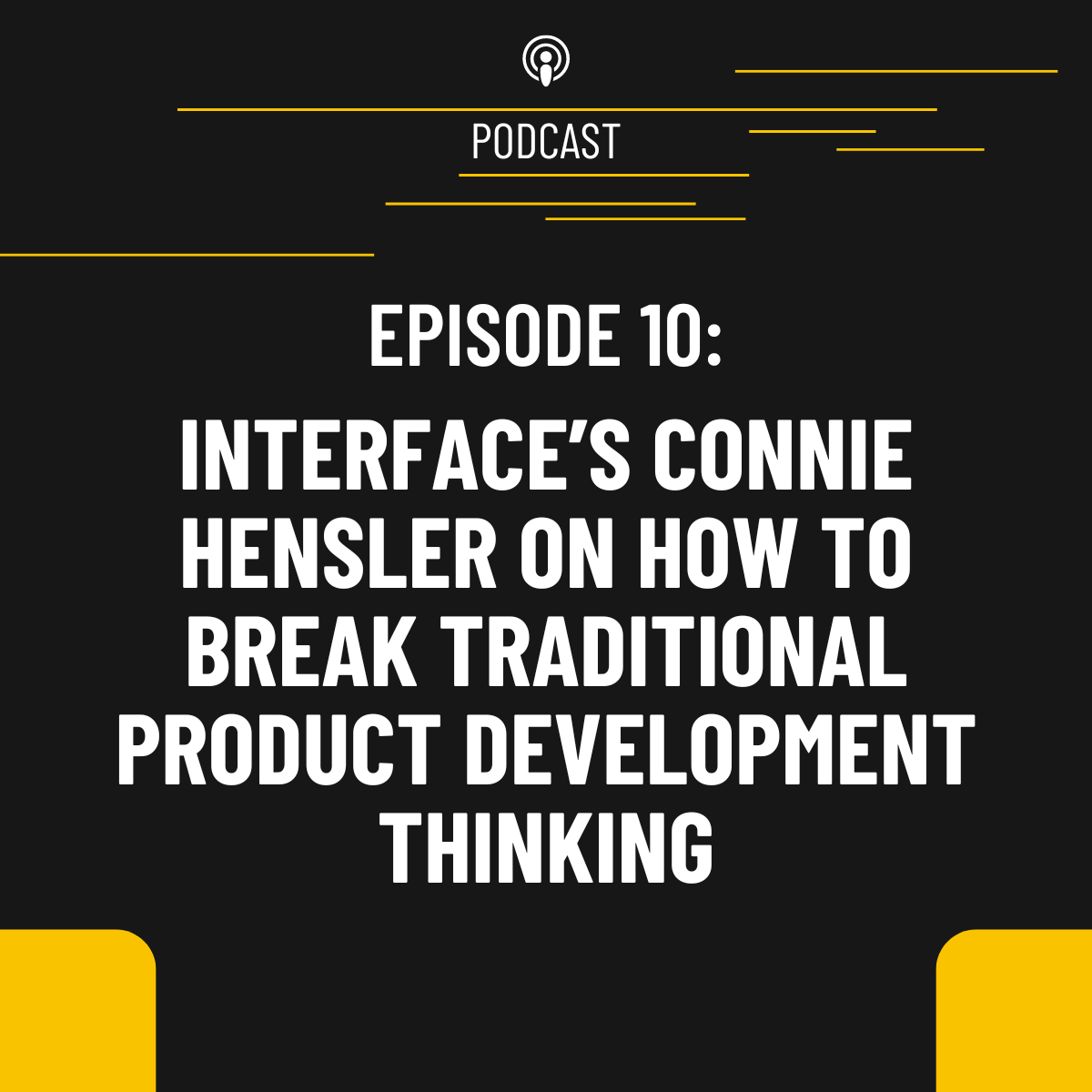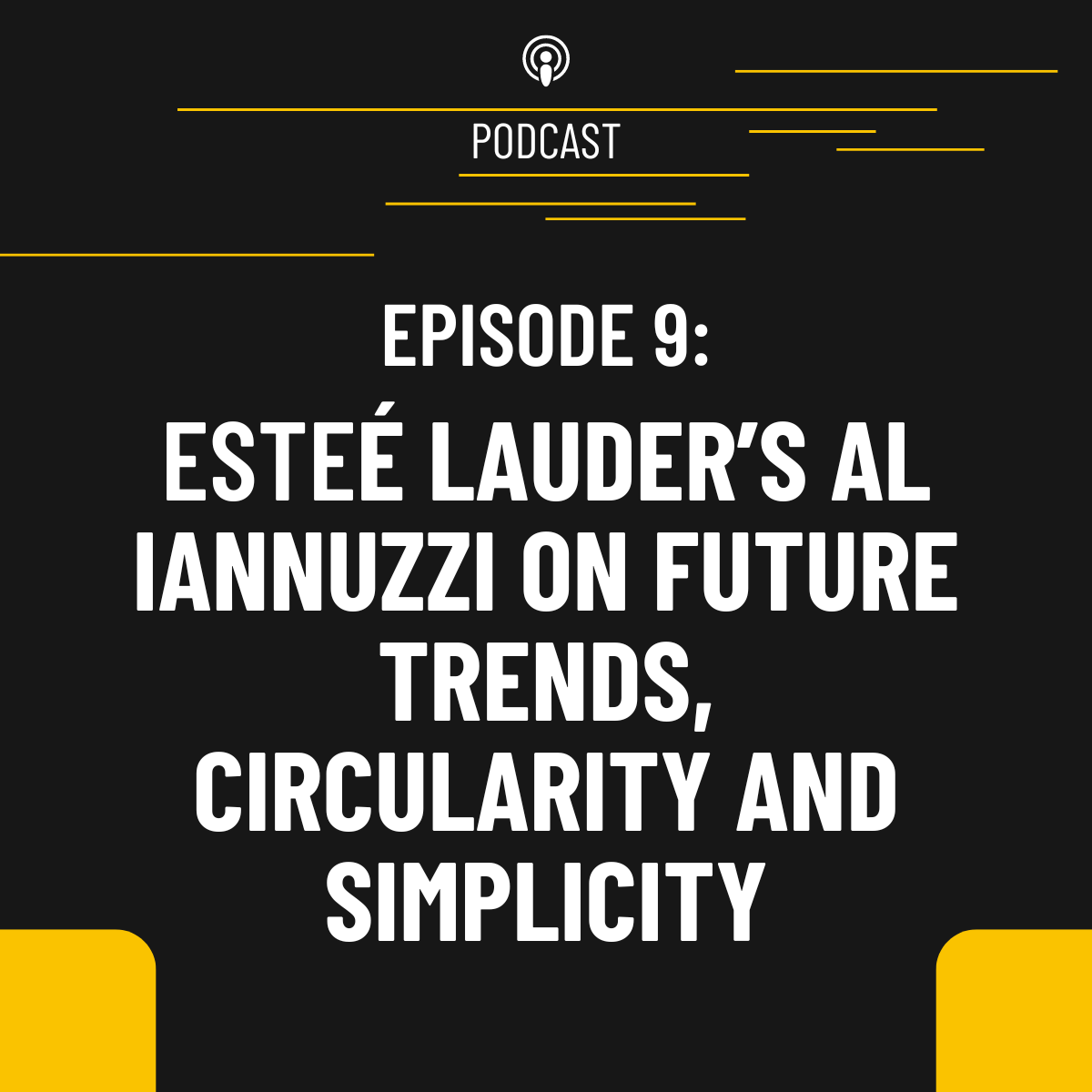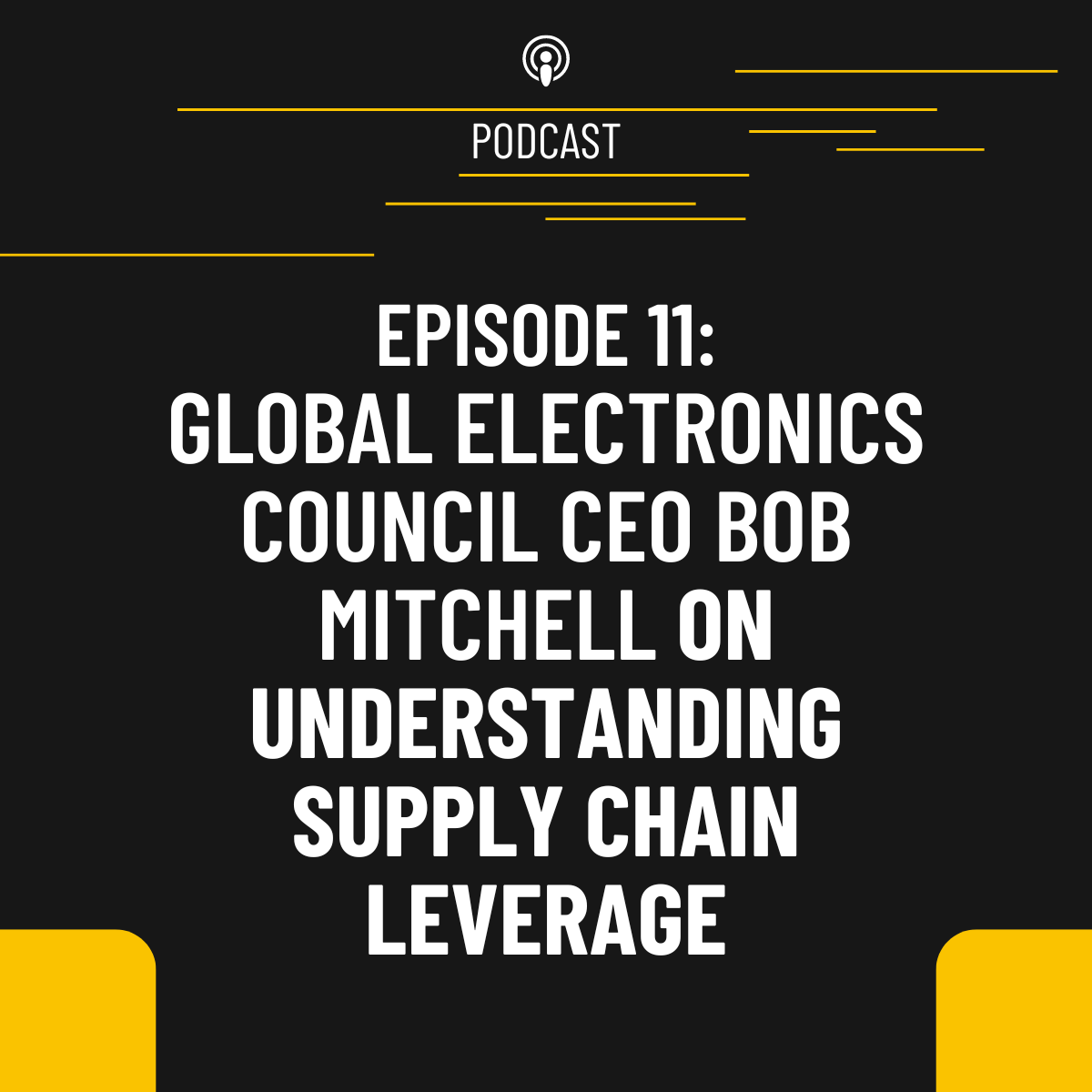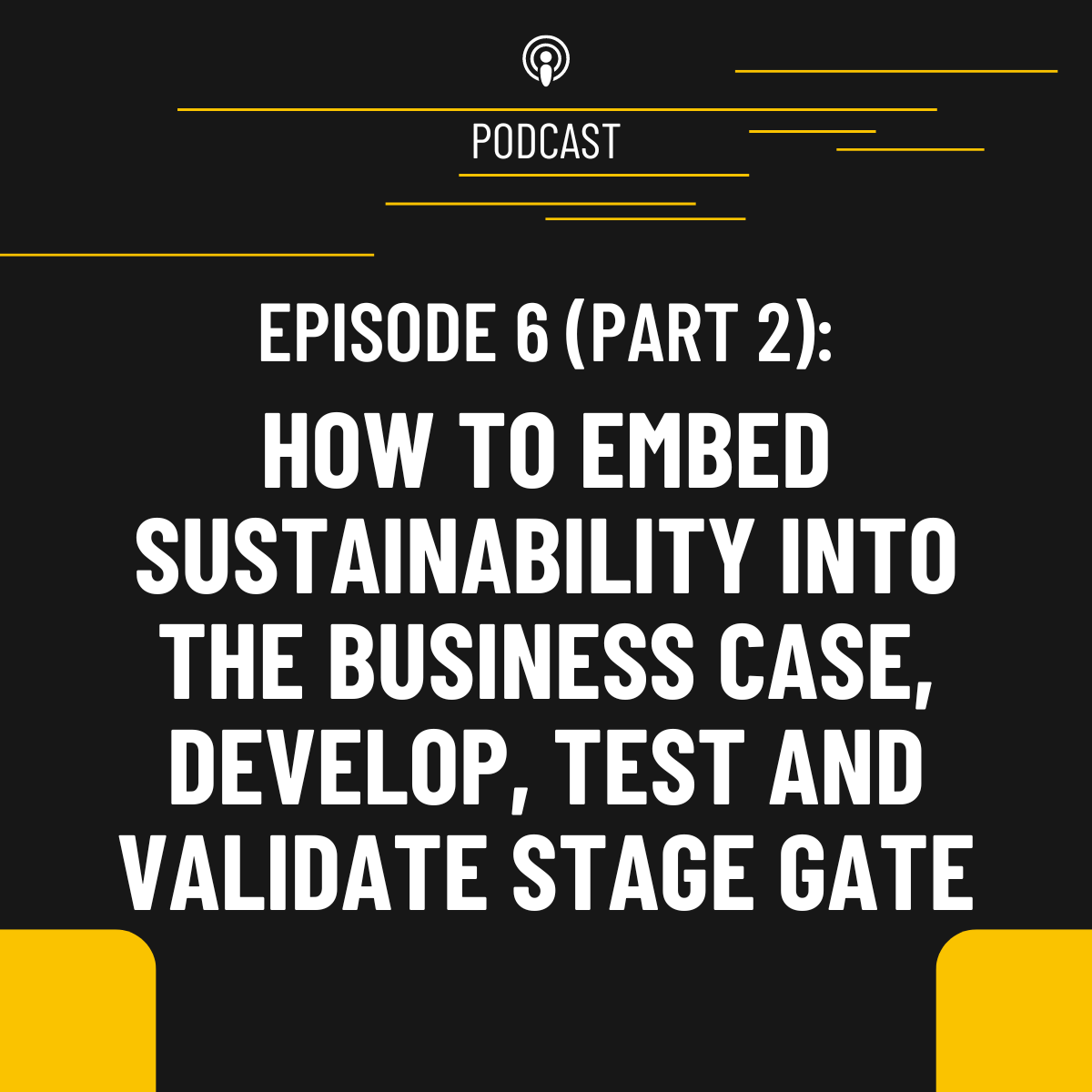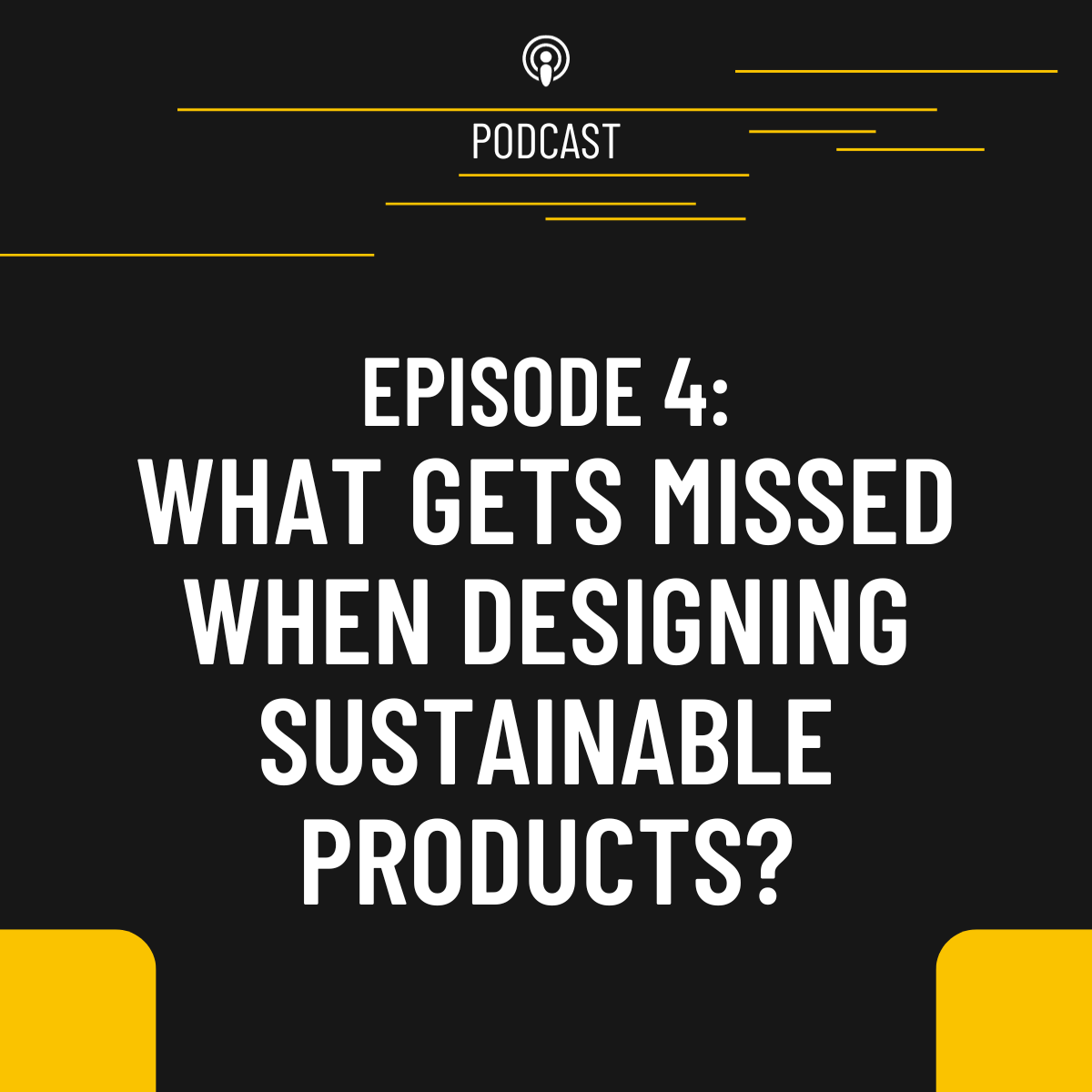Show Notes
In episode 10, we welcome special guest Connie Hensler, Global Director of Environmental Management and Product Stewardship at global flooring manufacturer Interface. A long-term and passionate advocate of a more sustainable approach to design and manufacturing, Connie joins Neil, Jim and Shelley to discuss how to break traditional product development thinking with moonshot goals, all while achieving financial - and sustainable - success.
In this Episode
Shelley - For the sake of our listeners who may not know much about Interface, can you describe what Interface manufactures and its history with sustainability, because it's got a bit of a unique history. [00:34]
- Connie - Interface is a global flooring manufacturer. We make modular flooring, like carpet tiles, resilient and rubber flooring and we're a mid sized company with annual sales of just over a billion dollars. We're headquartered in Atlanta, Georgia, but we have manufacturing sites in many countries across Europe and the Asia Pacific region. But we aren't really known for our flooring as much as we are known for our design and sustainability leadership. We're more of a sustainability company who happens to make flooring. That's the perception of us in the marketplace, I think. [00:47]
- Neil - But you do it well, and that's the point at the end, right?
- Connie - We were lucky to be put on a mission many years ago, back in 1994, when our founder, Ray Anderson, had his environmental epiphany about the damage that the company does to the environment. And he really turned the entire company's mission towards eliminating that environmental impact. Of course, we still have to make flooring and we have to make money to support that sustainability habit, but that's really where all of our focus is and has been since 1994.
Neil - Do you remember how big of a company you were back in 1994? [01:54]
- Connie - I don't remember the exact figure. We were certainly a lot smaller than we are today. We have acquired a lot of companies and we have had organic growth. Back in 1994, carpet tile was our only flooring. We didn't have the other businesses. And carpet tile was just in its infancy. Most carpet wasn't modular back then. It was broad loom and so it's been a real revolution in the flooring industry to move from, you know, giant rolls of flooring down to the modular concept, which is so much more sustainable. So we've grown a lot since 1994.
- Neil - The reason I asked is flooring has been around for a long time. The kind of flooring has changed and as you described, the products have evolved over time, but it's not nuclear fusion, it is not artificial intelligence; these kinds of themes that everybody focuses on. It's quite unique to find something that makes you stand out and it's not often that a company finds it. It seems you guys banked on being the most sustainable company of your kind. Would that be fair to say?
- Connie - Oh, yeah, definitely. We just did it so early in the game before anybody else was doing it. I think that's what really made us originally stand out.
Neil - So how did it start? [03:21]
- Connie - That was so long ago. We began with Mission Zero - our goal to eliminate all of our environmental impact. And it wasn't just a top-down initiative, it was driven by the chairman CEO of the company, which is immeasurable in the impact that can provide. But it was also a groundswell on the factory floor because we engaged all employees in it. Because let's face it, anybody who's in the company who's doing anything, whether you're answering the phone or running a tufting machine, you are contributing to the environmental impact. So how can everybody contribute to reducing or eliminating that impact? And instead of coming to work to help the company make money, you were coming to work to save the world. Everybody was inspired. And you got such great employee energy in that.
Jim - A lot of the interaction we've had with companies in the past is top down. Even the employees are 100% behind it. There's often like a middle manager that begins to stand in the way. Did you have the same belief in action by the middle managers as you did from the top down? And the factory floor? [04:19]
- Connie - Probably the middle management is always the last to adopt the change. But having the drive from the top, it became part of their KPI's and the managers get on board or get off the train. And they tied all the performance and bonus schedules to it. If you wanted to earn your bonus, you better be meeting your environmental targets. So that helped a lot too.
Neil - Sustainability has been around for a while; the good part of about 40 years. But when I talk to product managers and engineers, many of them do not know what it is. And these are highly educated people that are focusing on creating products that are typically very technical that require trade off analysis and stuff like that. How did you end up translating the ambitions of being more sustainable to the entry level or the shop floor employees and what they had to do on a daily basis? [05:05]
- Connie - You know, it's all about the metrics. It had to be measurable, and then you had to be able to score against the goal. So, we got way deep in the details of, there must have been, I mean, there were spreadsheets and spreadsheets of all the different parts of the business that we were measuring, all the different pieces from scrap rates on every single machine. How are we going to reduce this waste? Because, you know, a huge part of our impact is always waste and efficiencies. So, everybody had a scorecard. There were posters in the plant, daily updated with progress. You'd see that a lot in quality, maybe you see that kind of charts and graphs posted about daily quality accomplishments. We had had quality too, but in addition ours were tied to the environmental goals. And the metrics were so fine that you could see, not daily, but probably weekly performance.
Neil - If I'm reading you correctly, you translated, or someone translated that we want to reduce waste. This is something easy compared to the steps to translating reducing carbon impact to the shop floor. If you just had a waste impact and you said, reduce the weight of the bag of scrap, at the end of the day, this is much easier. So how low did you have to go to operationalize this? [06:41]
- Connie - When we started, we weren't doing life cycle assessment. We just had a list of things that we knew we needed to reduce - non renewable energy, virgin raw materials, waste factors. We just had this long list of things we thought were relevant to environmental impact. But then in 2000, we adopted the use of lifecycle assessment for our metrics. And of course, we weren't just focused on carbon. For many years, we were focused on all the different impact categories. But then eventually, ten years in, we started focusing on carbon. So anyway, because we do life cycle assessment on all the thousands of products that we make, you can drill down to the shop floor and say, if you decrease the trim waste by this much, it reduces the carbon footprint by this much. We had to be using lifecycle assessment before we were able to do that. Before that, you could only tie it to cost because financial accounting was all we had at the time.
Neil - Was there any epiphany that came out of using lifecycle assessments that you did not have before? [08:14]
- Connie - When we started we were just a carpet company. The chemistry and the formulation work that we did internally was focused on the backing, which is the mass of the carpet for modular carpet. It has a real structured back for dimensional stability and installation. And that's where our expertise was. We were good at that, and we understood that very well. So, we assumed that's what we should be working on. But we did life cycle assessment and suddenly we realized that's one of the least impactful parts of our product. The nylon yarn on the top, the energy inputs and the waste factors were what was driving. So LCA was very helpful. Unfortunately, it showed us that we had to work on stuff that we didn't have as much control over, but it's what we needed to be working on.
Shelley - There's this other aspect of mission zero that I think would be interesting to look at, and I've heard you mention before that traditional solutions tend to be incremental, and Interface didn't do that. Instead, it set a target to eliminate its environmental impact and called that mission zero. How did not choosing an incremental target change the problem you were trying to solve? [09:12]
- Connie - Traditional product development tends to be improve a product characteristic or maybe add a feature, and you just kind of assume that there's an added goal of improved sustainability, and that leads to, or maybe there is a specific improvement dictated by the product brief, and that usually leads to incremental changes and incremental improvements. It's just the normal way of doing product development. But when the product development goal is to have zero negative environmental impact, you have to rethink the whole plan. I mean, you can approach it incrementally if you have decades to achieve it, but changing your mindset from incremental to reaching zero makes you look at the larger system, breaks you out of your thought pattern that product development usually works in. The seemingly impossibility of zero shakes you out of the normal ways of approaching a project and makes you see things in a new way. You're forced to find new ways to look at the problem.
Jim - When you think about the defined net positive kind of thing, how do you look at ten years down the road and the carpet being replaced or remodeled or things like that? Do you establish partners that will come in and do the recovery reuse, or do you do that yourself? How do you handle the end of life in the design portion of your project? [10:34]
- Connie - It is a huge challenge. We have been recycling carpet internally ourselves, bringing it back from the customer since 1998, but it wasn't robust until 2000. And that's one way to approach it. We had to set up reverse logistics to get the stuff back from our customers, then develop processes to grind it up and separate it and put it back into carpet tile. And that's been our model for recycling all these years. But I will say it's a real struggle because oftentimes the person we sell the carpet to doesn't own the carpet when it's time for it to come back. We've tried a lot of different models. We've tried what we call an evergreen lease, where we lease the carpet so that we can maintain ownership of it. It's very challenging to make the finances of that work, but we're able to do it a little bit.
- Twenty-five years on, even though we bring back millions of pounds each year, it's still a very small amount of what we actually sell. So, in retrospect, I think it's more important to not focus on that closed loop recycling carpet to carpet, but to find partners and look at the broader technical cycle of things being recycled. We also do have reuse partners that we have where we bring back carpet that's still ready to have another life. It doesn't need to be recycled. And we work with these partners, and what they do is they refurbish, clean, process, repackage, and then send it on for another life. And we're going to be expanding on that in the coming years because it's such a missed opportunity. Why grind the stuff up and remake it if it's perfectly fine? We make carpet for commercial interiors, not residential, so it's really high performance and it's a little over engineered sometimes because it lasts longer than our customers use it. I think it's a missed opportunity if we're not moving it into the reuse market.
- Jim - It's like clothes. You know, clothes you can wear a couple of times. It's like carpet. I had blue for five years, now I want a green or something. The flooring is fine.
- Connie - Oftentimes we find that the lease cycle on commercial office space is usually about seven years. And when the lease changes, they change the carpet, need it or not. Or time for, like you say, a new color, a new design. A lot of carpet doesn't see its full use potential.
Jim - With the Green Building council and LEED initiative that's been around for decades, is LEED still a major player in your market? [13:23]
Neil - Just to open up that question a bit more, what is driving consumers or your customers to buy your product as opposed to anyone else?
- Connie - LEED was very useful. It's still in place. It drives a lot of the second comers to take sustainability initiatives and to meet the minimums. It certainly.
- Neil - What do you mean by second comers?
- Connie - I just made that word up, so I don't have a good definition, but I'm talking about the followers. They are just attempting to meet the market requirements. Now, the market does have some requirements for sustainability, at least in the built environment. If you're going to play, you've got to at least meet certain LEED criteria. And so those businesses meet those requirements to do business, not as a leadership position. Where was I? Oh, yeah. We were going to talk about what's driving purchases.
Neil - Why do people still love your product as opposed to anyone else? [14:17]
- Connie - We're focused on what the customer is asking for in performance. We're telling them what they need from the sustainability. I mean, that sounds really arrogant, doesn't it? We spend a lot of time on education, trying to explain what the problem is and what the solutions are. And we try to encourage our customers to want the environmental attributes that we have.
Neil - But wouldn't they need to pay more for it? Connie, how do they react to that? [14:44]
- Connie - I think it's a misperception. People assume that if it's more environmentally friendly, that it costs more money, and that is a construct of the people who are developing products. They're saying, oh, the customer is going to pay more for this because they want it. So, I got 10%, 25% more money to spend developing this product and that’s just wrong thinking. If you're reducing the environmental impact, you're probably improving efficiency and reducing waste and the things that drive down cost. Now, if you’re going to make a new product and you get to spend 25% more. Well, I'll spend it, you can bet. But if you look at it differently, don't make that part of the product brief. You're throwing that money away. Cost parity is job number one at Interface. Ray Anderson, our founder said you got to make it more sustainable, it's got to perform the same and it has to cost the same. And if you would bring it to him and it costs more, he would say, go back to the drawing board. You have to widen your perception of how to get there. It's kind of like putting the zero target on there. Putting the cost parity target on there really changes your development process.
Neil - Connie, does that restrict the jumps you can make? Typically, when you look at efficiency as the prime driver of reducing impact, you’ll make 10%, 20%, 30% improvements. And you do this iteratively, but at some point there’s the law of diminishing returns and then you need to change the game once again, which takes investments a lot of times. Think of the investments that you make in thinking about how to use recycled materials in your product for setting up these relationships for reuse so that the entire portfolio reduces its environmental impact. The question is do you think product managers should consider or leave their options open to potentially having a more costly product, but with a dramatically different outcome, or do you think that it doesn't need to be that way at all? [15:59]
- Connie - I think it can be both. But I think it should start with cost parity and see what you can do. We had to build an entire new backing line and processing line to make our carbon negative products and to make our recycled back products. And the cost of the product, like the raw material cost and the processing cost needed to – and all that investment was based on - making the product cost the same. But of course, there is capital investment in that part of the finance way.
Neil - Is that something that you could use? In Europe, for example, there is tremendous amounts of money for those kind of capital investments. I think that can significantly alter the outcome of the impact of the product. There are even loans that one can get now which are ESG based loans that have better interest rates to fund exactly these kinds of initiatives. Were these helpful to you as a company? Is this something that other product managers should look into as relevant, or do you think this wasn't necessary for your growth path? [17:21]
- Connie - It hasn't been necessary for Interface, but yes, if anybody can take advantage of it, absolutely. We do partner. For instance, we're partnering on a recycling initiative in Europe for flooring with all the other flooring manufacturers, and it's being funded. So, we're looking to get help and participate and use that funding to get recycling for all the flooring industry, not just particularly for Interface. We haven't taken advantage of that as a single company in the past. But, yes, it's a great opportunity for a lot of companies.
- Neil - Ten years ago, this was not a thing, but I think now there's several companies that have looked at this as an opportunity to invest in that next generation of products and processes, to make products that we're currently using.
- Connie - It's definitely facilitating much more rapid product development.
Neil - Speaking of this, at the end of the day, do we have the means to get to the outcome we're looking to do? Getting to zero was mission zero, as you called it. That's the goal that you set. And the parameters that you set were cost parity, performance parity, and then reduced impact. You mentioned that there were compensation plans that were tied to this. Was there anything else that the company needed to start? The place that I come from is for product managers where this is new, and there are still tons of them where this hasn't been implemented more than, I'd say, experiments. You do a bit of investigation to know what your hotspots are. There's very few, half a billion-dollar companies and up that have never investigated this. I think there's a large portion of 100 million to $5 billion revenue companies that have done something in this space. But for those that have not only done anything significant in terms of investigating what the opportunities are and whether it makes business sense, how to get them to take that first step. [18:43]
- Connie - Yeah, there's so much low hanging fruit with those guys. You got to set a measurable target. I think that's the only way to get started. You can't just have this, oh, the marketing team wants to have a sustainability story, come up with something. And I think lifecycle assessment, it so clearly identifies what those one, two, three things are that you need to do, and you can clearly measure whether you're doing it or not. So, I think it's a great place to start. What are your hotspots? And then list the projects you can do to address them, and then measure your progress using life cycle assessment. Of course, I'm an LCA practitioner, and you know, if the only tool you have is a hammer, every problem is a nail. Well, for me, every problem, it can be solved with life cycle assessment. So, take it with a grain of salt.
Jim - When you go back through the corporate goal of net zero, and that transferred down to individual products. Every product manager in the design has a goal that they can contribute and link back to that overall goal. Could you talk a little bit about how that happens? [20:51]
- Connie - Today our goal is on specific quantified reductions in science-based targets initiative on carbon emissions reduction, scope three emissions reductions. So, we do the lifecycle assessment on every product made every year, which is thousands of products, and we create what is the global product carbon footprint.
- Connie - Our targets are on cradle to gate. Obviously, we're measuring and recording, but we're not targeting reductions in the rest of the life cycle. Just cradle the gate. So, we know in each region how their products contribute to that total. And then at that region, we know which products contribute what. Sometimes it's that they're selling products with a higher impact in one region than more of them in one region than the other, because the market demand for that product style is higher in one place than another anyway. It's granular. It goes all the way down to what's the product portfolio that you're selling. And also, because you can make a great, sustainable product with really low environmental impact. But if you don't sell very much of it, it's not really driving your global number. Right. So sometimes that's the first step. Then you got to figure out how to sell more of it. But the big products where you sell a lot, if you can reduce the impact on them, then it changes your global number. So we're just trying to drive that global carbon footprint down to meet a 2030 goal and then a 2040 goal. And so, every product's contribution in every region, in every factory shows how they roll up into that number.
Neil - This is very interesting. Typically, when, when I talk to product managers, they will look at a product that is not a big cash cow. So, if they change it and something goes wrong, it doesn't affect the business a lot. Don't change something that's working. What you just said is fundamentally opposite and it's true. If you work with a product and create even a perfect innovation and take it to zero, it may not have an impact because it was never a big portion of your business to begin with. Was there a mind shift that needed to happen for you to start considering the big chunks? Because that's a huge risk to affect products that are currently your biggest sellers and probably the most profitable products that you have. [22:49]
- Connie - It was mindset, and it was set by management. I remember the president of Interface, America's sales organization, and he said, we will not introduce hero products: a product that's super sustainable, it makes a great story and it's great marketing, but it's not something that's core to the business. And our competitors are always throwing up a hero product. And I'm like, but how much of that are you selling? It was a real decision internally because our mission was to reduce our footprint, not to gain market notoriety. We were looking to reduce our footprint. So don't make a hero product. If you're going to make an improvement, make it on the core materials that we sell a lot of.
- Neil - I'm going to steal this from you. Hero product. This is cool.
Jim - We've been working a couple with companies about doing portfolio assessments and you mentioned the portfolio a minute ago. Do you have a portfolio assessment approach? Or is it more on a product-by-product basis? [24:22]
- Connie - It's not based on individual products, and we don't rank them because we're just looking at all the raw materials we buy. These millions of tons of stuff. This stuff, it's a certain percent fossil-based polymers and mine minerals. The goal is all of that stuff needs to be 100% recycled or biobased. How can you change all those things to something recycled or bio based? And it's not really on an individual product, it's on the whole tons of stuff we buy.
- Jim - Every company's got their own business model in the way they run the business. So portfolio assessment works for some.
- Connie - Absolutely, especially if you have really different products because flooring, is flooring. They're similar from one to the next. But if I was in the chemicals business, wow, its different products making up their portfolio.
Jim - When I first met Ray Anderson, I participated in the president's council sustainable development back in the early nineties and Ray Anderson was there and Sam Johnson with SC Johnson too; major players in the whole scalability market. And to see Interface - from the early nineties continually through multiple leaders and multiple management structures - still have that same vision that Ray put in place is a testimony to Interface and what you have done and are still doing. [26:06]
- Connie - When Ray passed away several years ago, we were all in a bit of a panic. Are we going to stay on our mission? And we've been through a couple of CEO's since then and fortunately it's just so core that this freight train is running down the track. And it’s successful too. If we weren't successful financially, certainly we wouldn't keep doing it. It doesn't just feel good, it actually is good.
Shelley - That's a great story and you've shared some great learnings for our listeners from Interfaces’ success like building sustainability into core products, not to be afraid of picking a really ambitious goal like mission zero and to measure it, and not be afraid of setting your own constraints to achieve those things. You've really showed how some of those ideas have not only moved your company towards sustainability, but you've been successful too. Connie, I'd love to end with a final thought from you for our listeners, something that you might like them to think about and take away from today. [27:11]
- Connie - Well, I hesitate to preach because product development at Interface is unique because it's a really unique company, and sustainability aspects are always the main driver in our product development. Our challenges tend to be more technical than they are political or logistical. It's always how do we reduce the footprint while also meeting cost and performance requirements. But I guess I would say put the restriction of cost parity on every project, say improve sustainability profile of the product without increasing the cost, and they'll say you're crazy and that's not possible. But that's really where the magic begins. That's where you come up with different ideas. Also, I would say, don't settle for incremental improvements. Make the target a moonshot. Regarding climate change, we don't really have time for incremental change. We have to make real progress and we have to make it quickly. And I think much of that responsibility lies with you, with the product development people. So, I hate to put the burden on you, but it's important. It needs to be done, so get it done.
- Jim - Connie, well said and thank you very much. We really enjoyed the conversation and excellent input, and I'm sure a lot of people will walk away with some very actionable items.
Links to Things We talk about
- Interface Mission - https://www.interface.com/US/en-US/sustainability/our-mission
- LEED standards - https://www.usgbc.org/leed
- Science-based Targets Initiative (SBTi) - https://sciencebasedtargets.org/
Who’s talking?
To read about who you are listening to, visit https://five-lifes-to-fifty.castos.com/ and click on our bios.
We want to hear from you
Do you have a story about how you are using what you heard?
Is there a question you would like answered?
We want to know! Write to us at [email protected].
